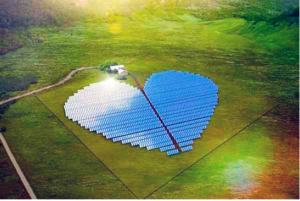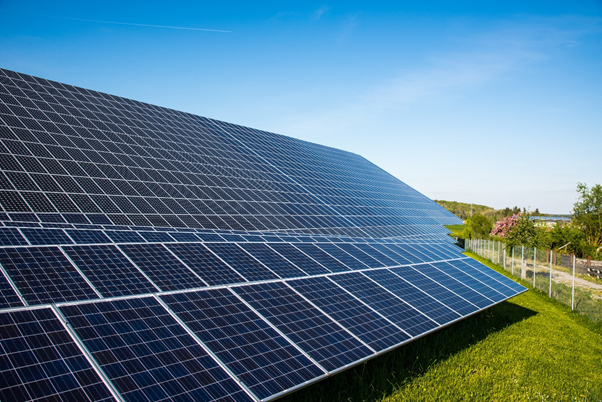Indonesia is known for its tropicality, with year-round golden sunshine. Certain researches say on about how Indonesia can generate electricity entirely from renewable energy has calculated the country has the potential to come up with about 640,000 Terra Watt-hours (TWh) per annum from alternative energy. That’s resembling 2,300 times last year’s electricity production.
Can alternative energy help Indonesia to realize 100% green electricity by 2050? Let’s find out! Despite this huge energy potential, investment within the renewable energy sector continues to be low. Hence, solar power contributed only 7% to the country’s total electricity production in last year.
Last year, Southeast Asia’s shook the economy by producing 275 TWh of electricity through different power plants with the holding capacity of 69.1 gigawatt (GW). Gas, Coal and Diesel power plants supply most of the 90% of electricity. The remainder comes from power plants using renewable energy – hydro, wind, geothermal, solar and biofuel. The domination of non-renewable energy power is anticipated to last until 2050.

Even though Indonesia has abundant solar power, state power firm PLN, currently the sole electricity supplier, can’t tap into it immediately because it is bound by contracts it’s signed with various powerhouse operators. These contracts hold the validity for a minimum of good twenty years.
The government predicts the employment of solar power in electricity production will only account for fewer than 10% of the overall energy mix by 2050. Many experts argue that with its abundant sunshine and unique topography, Indonesia should be ready to generate 100% green electricity from its alternative energy by 2050. the govt has to set attractive policies for both customers and power providers to create this happen.
Here are four reasons why Indonesia has the greater potential to get its electricity entirely from solar energy:
Available of Plenty of Sunlight
Indonesia’s electricity consumption was 1 megawatt-hours (MWh) per capita in 2019, only 11% of Singaporean consumption. National Electricity General Plan of Indonesia voice that the nation’s electricity stipulation will climb upto 1,000 TWh, equivalent to 3.3 MWh per capita, within 2038. If this agenda continues, the estimated electricity will reach 7.7 MWh per capita or 2600 TWh by 2050.

To fulfil the 2050 demand of green electricity, Indonesia needs to reach the ultimate capacity of 1,500-gigawatt (GW) of solar photovoltaic (PV) power plants. Solar PV holds the capacity to convert solar rays into electricity with the help of photovoltaic modules. It’s expected 230 MW solar PV are going to be installed this year. According to my research, providing 2,600 TWh electricity won’t be a problem thanks to the large alternative energy that Indonesia has.
- Decreasing costs to line up solar PV farms
The global average cost of the total investment in industrial scale solar PV is falling low very quickly. For instance, it fell by 78% between 2010 and 2018. In Australia, the price of large-scale solar projects has fallen dramatically from US$85 per MWh in 2015 to an expected US$28-39 per MWh in 2020. These prices are well below the value that Indonesia’s state power firm, PLN, has to generate electricity, at around US$79 per MWh.
To meet the 2050 figure, the govt. must generate 50 GW from alternative energy every year, starting 2021, and connect it to power grids. This is likely achievable, considering that building solar PV projects is far faster than for fossil power plants. A solar PV farm needs a maximum of two years of construction, while coal-fired power plants need a minimum of three years to finish.
To supply electricity at the hours of darkness, the PV system will need battery storage. Battery prices have also fallen by 87% since 2010, to $156/kWh in 2019. Prices are expected to still decrease to $61/kWh by 2030. Complementing batteries, pumped hydro energy storage is additionally ready to store electricity during sunny days and quickly distribute it when electricity generation is interrupted during cloudy weather. Indonesia holds around 26,000 best hydro pumped sites and a combined storage of 820 TWh. This number is 100 times over required to support a 100% renewable electricity system from solar panels in Indonesia.
- Have large areas to put in PVs
To install enough PVs to fulfil the 2050 target, Indonesia needs a minimum of 8,000 square kilometres, or about 0.4% of the country’s area. Should problems with land acquisitions arise, the govt. could also install the solar panels on water. an oversized fraction of those panels is placed on floats on lakes and sheltered seas.
Indonesia has huge water territory because the world’s largest archipelago. it’s lakes with a section of about 119,000km² and territorial sea of about 290,000km². Like cherry on the top of the cake, most of the buildings can hoist the solar panels on the roof. With these plans, the installation of solar panels would force only 0.1% of Indonesia’s land.
- Green Travel Dating
Indonesia has pledged to cut back greenhouse emission emissions by 29-41% by 2030. It has also set an ambitious target that its renewable energy portion will double to 23% of the country’s total energy mix to come up with electricity by 2025. it’s expected to achieve 31% by 2030.
However, last year, Climate Action Tracker (CAT), an independent research organisation tracking climate action, reported that Indonesia has did not reduce carbon emissions. CAT’s final veridiction was that no concrete steps are taken into consideration and rate Indonesia as “highly insufficient action”.
Fossil fuel power plants and transportation still contributed 34% of Indonesia’s emissions in 2017. this might become much larger as energy consumption increases unless Indonesia shifts electricity generation to renewables as other countries do.
For example, Australia reached a 25% renewable energy target in 2019 and is not off course to succeed in 50% renewable energy in 2025 by installing wind generation and PV. Vietnam has secured 135 solar PV projects with a complete capacity of 9 GW. 32 GW of solar PV was installed in India. And the target is to take the numbers up to 100 GW within 2022. Singapore isn’t lacking behind as it is also building 60 MW of floating solar PV plant. Cool, isn’t it?
The Last Words
The vast and consistent abundance of sunshine in Indonesia, together with the low and falling price of solar PV, means 100% renewable electricity with zero emissions is eminently feasible for Indonesia to attain in 2050.
If you hold the power to enjoy eco-friendly green electricity without free of heavy bill, wouldn’t it be dream come true? Won’t you be happy? Yes, that’s the green electricity from solar energy!




Leave a Reply